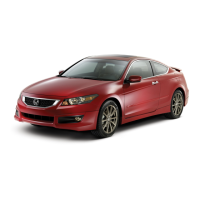
Do you have a question about the Honda 2008 Accord Coupe and is the answer not in the manual?
| Brand | Honda |
|---|---|
| Model | 2008 Accord Coupe |
| Category | Automobile |
| Language | English |
Labels on the vehicle warning of potential hazards.
Information preceded by alert symbols and signal words.
Titles indicating important safety reminders or precautions.
Sections on Driver and Passenger Safety.
How to use the vehicle correctly and safely.
Overview of the dashboard indicators, gauges, and controls.
Location and function of controls on the steering wheel and dashboard.
Features like glove box, cup holders, and console compartment.
Adjustment and features of front and rear seats.
Adjustment and features of inside and outside mirrors.
Operation of power windows and moonroof controls.
How to apply and release the parking brake.
Key safety recommendations for occupants.
Overview of passive safety systems like airbags and seat belts.
Detailed information on seat belt system components and usage.
Explanation of front, side, and side curtain airbags and their operation.
Guidance on seat adjustment, belt use, and proper posture for safety.
Guidelines for properly restraining infants and children in the vehicle.
Safety information regarding carbon monoxide exposure.
Identification and importance of safety warning labels.
Diagram and list of airbag system components.
Explanation of how front, side, and curtain airbags function.
Meaning of SRS, Side Airbag Off, and Passenger Airbag Off indicators.
Information on airbag service and critical safety precautions.
Guidance on child seats, booster seats, and seat belt fit for different age groups.
Hazards of placing child seats in the front seat due to airbags.
Procedure for using the LATCH system to install child seats.
Procedure for installing child seats using a seat belt.
Guidance on using a tether strap for secure installation.
Overview of the dashboard indicators, gauges, and controls.
Location and function of controls on the steering wheel and dashboard.
Features like glove box, cup holders, and console compartment.
Adjustment and features of front and rear seats.
Adjustment and features of inside and outside mirrors.
Operation of power windows and moonroof controls.
How to apply and release the parking brake.
Controls and operation of the vehicle's heating and air conditioning system.
Operation of automatic and manual climate control systems.
Overview and operation of the standard audio system.
Connecting and using the Bluetooth hands-free phone system.
Programming and using the universal garage door opener system.
Operation, speed setting, and cancellation of the cruise control system.
Details on the preferred 5W-20 API certified detergent oil.
Guidance on using synthetic motor oil.
Information on the use and effects of oil additives.
Recommendations for driving during the first 600 miles (1,000 km).
Guidance on unleaded gasoline type, octane, and additives.
Steps for refueling, checking fuel cap, and operating the hood.
How to check the engine oil level and recommended oil.
How to check and add engine coolant.
Factors affecting fuel economy and how to calculate it.
Information on installing accessories and modifying the vehicle.
Guidelines for safely storing and securing cargo in the vehicle.
Pre-drive checks and adjustments for safe operation.
Procedures for starting the engine under various conditions.
Operation of the manual transmission, including shifting and reverse lockout.
Operation of the automatic transmission, including gear selection and shift lock.
Proper procedures for parking the vehicle safely.
Information on the hydraulic system, brake pads, and indicators.
Function and operation of the VSA system for stability and traction.
How the TPMS works and what indicators mean.
Guidelines for safely towing a trailer, including load limits and equipment.
Essential safety precautions to follow during vehicle maintenance.
How to read and reset maintenance service reminders.
Diagrams showing the location of all vehicle fluid reservoirs.
Instructions for checking and adding engine oil.
Step-by-step guide for changing engine oil and filter.
How to check and add engine coolant.
How to check and refill windshield washer fluid.
Checking and adding automatic and manual transmission fluid.
Checking brake and clutch fluid levels.
How to check and add power steering fluid.
Replacement schedule for the timing belt.
Instructions for replacing various vehicle light bulbs.
How to clean seat belts properly.
Proper use and anchoring of vehicle floor mats.
Location and replacement schedule for the cabin air filter.
How to inspect and replace windshield wiper blades.
Information on tire care, inflation, inspection, and replacement.
How to check battery condition and terminals.
Preparing the vehicle for extended periods of non-use.
Use and precautions for the temporary compact spare tire.
Step-by-step instructions for changing a flat tire.
Troubleshooting steps when the engine fails to start.
Procedure for safely jump starting the vehicle's battery.
Steps to take if the engine overheats and how to check coolant.
Explanation of Low Oil Pressure, Charging System, Malfunction Indicator Lamp, and Brake System indicators.
Location and replacement of vehicle fuses.
Instructions for safely towing the vehicle in an emergency.
Location of VIN, engine, and transmission numbers.
Dimensions, capacities, and weights for 2.4L and V6 models.
Explanation of treadwear, traction, and temperature grades.
Understanding tire size, load index, and speed rating markings.
How the TPMS works and its indicators.
Overview of emissions control systems like PCV, EVAP, and catalytic converter.
Procedure for ensuring readiness codes are set for emissions testing.
Contact information for Honda customer service and dealerships.
Overview of new vehicle, emissions, and replacement parts warranties.
How to inform NHTSA about potential vehicle safety defects.
Information on purchasing official Honda service and repair manuals.
Recommended unleaded gasoline type and octane rating.
Vehicle's fuel tank capacity.
Details on the preferred 5W-20 API certified detergent oil.
Checking and adding automatic and manual transmission fluid.
How to check and add power steering fluid.
How to check and add brake fluid.
Recommended cold tire pressures for normal and high-speed driving.
Inflation pressure for the compact spare tire.
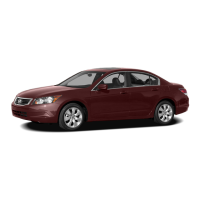



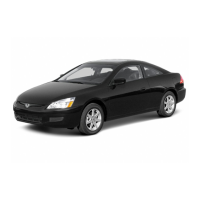
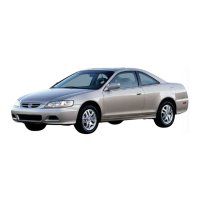
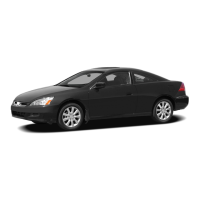
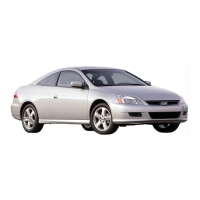
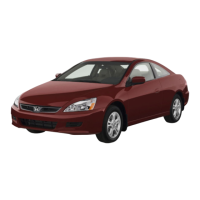
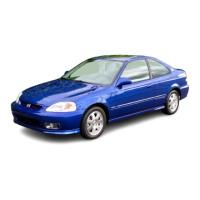


